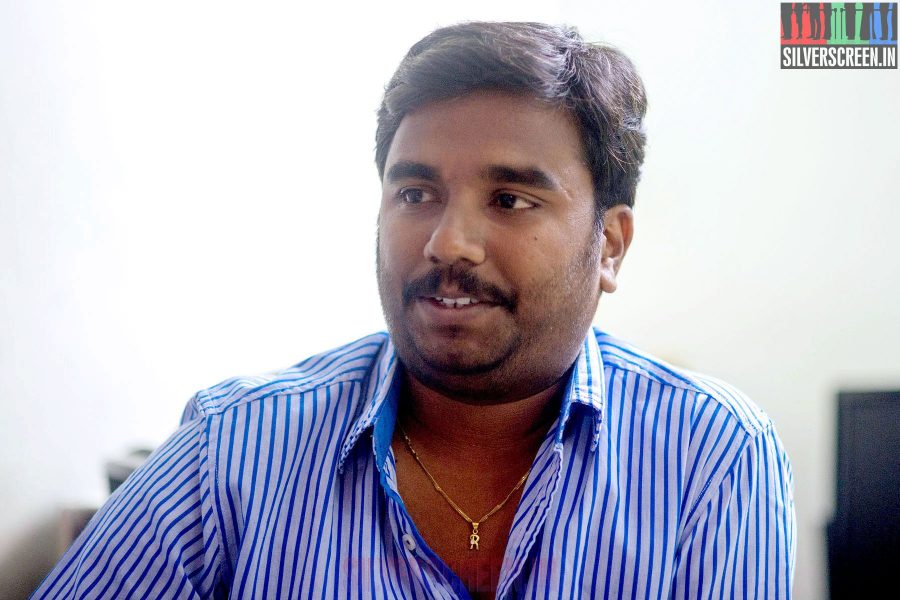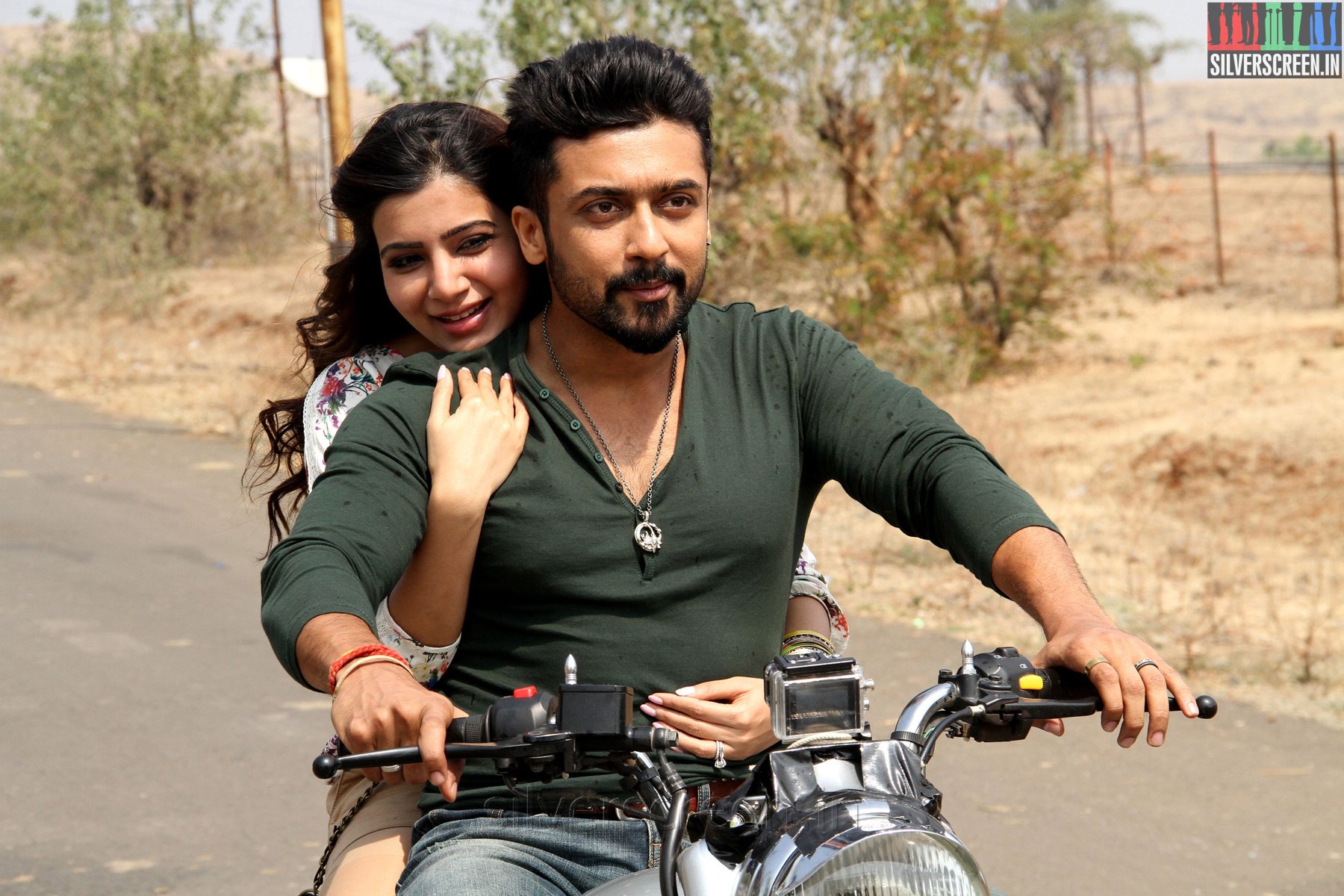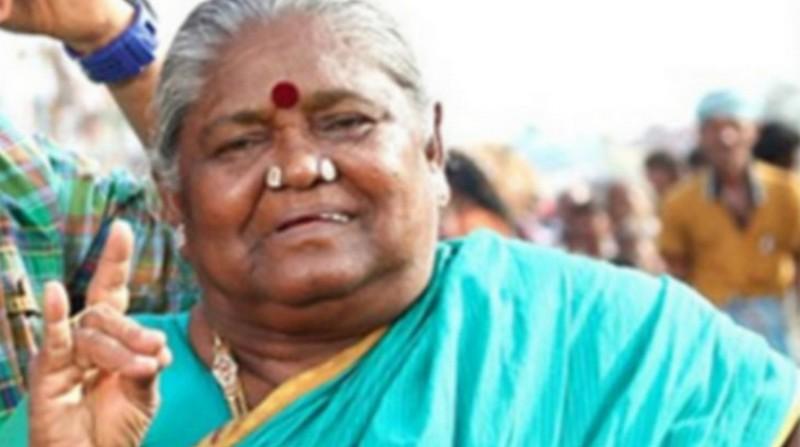[singlepic id=3939 w={320} h={240} float=none]
He won the National award for editing with his second film, Vallinam. Sabu Joseph takes us through his journey as a film editor and why he thinks Vallinam clicked.
Sabu Joseph is clearly not at home with the media attention that has followed his National Award. As he poses uncomfortably for our camera, he’s smiling nervously as he says, “I am not used to standing in front of the camera. I am happy at the editing table.”
His house at Vadapalani is rather quiet, save for the presence of a few of his friends from the film industry and incessant phone calls. He wordlessly takes me to his home turf — his editing room, and starts talking. I listen.
Did the award catch him off guard? “Not really,” he smiles. “I expected it. The minute I heard the script of Vallinam, I knew I’d get an award for it. My only concern was about Bhaag Milkha Bhaag having an edge but then we won.”
It’s a reward for having given his heart and soul to the film for the last three years. After signing Vallinam, he took his time with the script, having long discussions with director Arivazhagan and working closely with the actors. He would give tips to the actors on looking better on screen. And they would listen. “That helped a lot. We worked as a close unit, always open to suggestions and it shows on screen. After a point I became obsessed with Vallinam ” laughs Sabu as he admits that it took him a while to get the film out of his psyche.[quote align=’right’]It was Antony’s phenomenal editing in Kaakha Kaakha that did me in. The “Madras” cuts were incredible. One scene had four to five takes, and Antony jump-cuts between three shots – the effect was mind blowing[/quote]
He thinks the climax of the film nailed it for him – “The final basketball game was crucial. There was an intro, opening and climax match and each segment had to be coated in different emotions and style. There were 850 shots for the climax alone and I made 400 cuts. The last 20 minutes was supposed to keep your transfixed on the screen.” I agree with him as I recall clenching my fists in anticipation during the rousing climax and the deafening applause that followed.
Were there differences with the director at some point? “That’s the thing. We practically agreed on everything. He allowed me to do what I wanted. I think for a director it requires lot of courage to completely trust me to give shape to his dream,” he tells me.
Life-altering moment
Films were always on his mind and he tossed away his first job as a telemarketing executive after 6 months to fall headlong into his dream. He also knew that editor Antony was the man who was going to give flight to his dreams. Sabu recalls the exact moment – “It was Antony’s phenomenal editing in Kaakha Kaakha (2003) that did me in. The cuts (that later came to be known as Madras cuts) were incredible. One scene had four to five takes, and Antony jump-cuts between three shots – the effect was mind blowing,” he says before adding, “Also the railway station sequence and the one shot at a flyover were remarkable.”
http://www.youtube.com/watch?v=rD7Ttm5rR-c#t=288s
He started his first editing job as an apprentice to Antony, working with him in films like For the people and Manmadan. He then briefly assisted Uday Shankar who taught him manual editing. It was in 2004 with the Cheran directed Autograph that he made the switch to digital editing under S Sathesh. Soon after, he worked with Sudeep in the Kannada remake of Autograph as an assistant editor.
So what makes for a perfect director-editor synthesis? “Just like a director has a style, an editor has a distinctive style of his own. It’s all about visualising a script, improvising on the sets and being on the same page with the director. But as long as you own up to the fact that the final call is taken by the director, things automatically get better,” says Sabu.
Until 2009, he interned under several directors like Vasanth, Thankar Bachan and SJ Suryah- “SJ Suryah likes to take lot of shots while Vasanth prefers to deliver his story in a single shot. Every director will ask for different lengths and variations and the challenge is to adapt to their style,” he offers.
Big break and after
In a lot of ways it was two film trailers he edited that led to his big break- Eeram and Kadhalil Vizhundu. An impressed Arivazhakan promptly offered him Vallinam.
Does he think editing is more intuition than technique? “It’s all about intuition,” he says, “Technically with a good editing software, anybody can do it but intuition cannot be cultivated. With digital editing it’s more difficult as you have far too many shots to choose from. Though it becomes easier during the post-production of a film.”
Vallinam’s placement of songs was widely praised. So how much is too much when it comes to songs in our films? “I think the beauty of the songs are in their placement. And it should have the right duration. I feel we have really learnt to place songs well in a film and the editing is crisper. A few years down the lane, we may even go the Hollywood way of no songs,” he tells me.
This year, his kitty is full and has handpicked films from each genre. There is Aadhi’s Yagavarayinum Naa Kaakka, a thriller, Lakshmi Ramakrishnan’s drama, Nerungi Vaa Muthamidathey and the science fiction drama, Tamizhukku En Ondrai Azhuthavum. Then there is Naalu Policeum Nalla Irundha Oorum, an out and out comedy and Vennila Veedu, which will be his first release after Vallinam.
What’s the most difficult genre to edit? Pat comes the answer: Comedies. “They require a lot of detailing. You need to get that expression right, or that close up shot to bring in that effect or that tiny laugh. It’s complicated and challenging,” he says before adding, “Sloppy editing can ruin even a well-timed comedy scene. Just like a good editing can elevate a badly made film to some extent, bad editing can ruin a good film.”
Recommended
[quote align=’left’]He looks up to Sreekar Prasad, B Lenin, T Vijayan for their versatility[/quote]Surprisingly when he lists recent films that impressed him with their editing, he picks mostly Indian ones – Aranyakaandam (“the path of editing was smooth”), Kahaani, Bhaag Milkha Bhag (“a riveting climax”) The Lunch box, and Inglorious Basterds. He thinks editing a commercial film requires lot of ingenuity and skill as high octane emotions and stunts can only be conveyed through razor sharp cuts. He gives an example to emphasis this point-“If a car is moving from point A to point B, why waste seconds watching the vehicle make the complete ride at uniform speed? So just press the fast-forward button and speed the car to its destination in no time.” It’s something he learned watching Antony edit for films like Endhiran and Singham.
And to wannabe editors, he has a few tips-“Watch plenty of films. You really need to love movies to be a good editor. Work on it and just keep learning with every film and every director.” And finally as we leave, we have our own tip for Sabu Joseph: The sooner he gets used to the media attention, the better.



